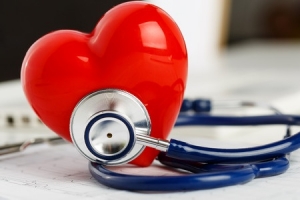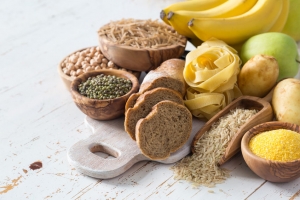January Is…
National Blood Donor Month
Happy New Year! With the closing of another year, we will jump right into our second month of Alpha Cares, which raises awareness and funds for causes that are near and dear to our hearts!
January is National Blood Donor Month! Every two seconds, someone in the United States needs blood. Those who suffer from accidents or sickness are in great need for red blood cells, plasma, platelets, and cryoprecipitate that come from donated blood.
Many people have a fear of blood or needles that keep them away from donating blood. However those with that fear who decide to give blood find that the process is easy, relatively pain-free, and quick. The donation process is quite simple, as it is split into four parts: registrations, health history and mini-physical, donation, and refreshments.
You too can save a life by donating blood. Visit www.redcross.org and type in your zip code to find the nearest blood drive location. Please consider supporting this important cause, as there are many people who are in need of donated blood every minute.
June Is…
Environmental Awareness Month
In June we are spreading awareness for conserving the environment! In America, we often use many resources without thinking about the consequences. Although our country makes up less than 5 percent of the world population, we still consume over 30 percent of its resources. Also, 110 million Americans live with such high levels of air pollution that threaten their lives.
May is…
ALS Awareness Month
May is nationally known as ALS Awareness Month! ALS stands for amyotrophic lateral sclerosis, which is a motor neuron disease that affects a person’s ability to walk, dress, speak, swallow, and eventually breathe. About 6,000 people in the United States are diagnosed with ALS every year, yet there is no known cause or cure.
By making these 10 lifestyle changes, you can lower your blood pressure and reduce your risk of heart disease.
If you've been diagnosed with high blood pressure, you might be worried about taking medication to bring your numbers down.
Lifestyle plays an important role in treating your high blood pressure. If you successfully control your blood pressure with a healthy lifestyle, you might avoid, delay or reduce the need for medication.
Here are 10 lifestyle changes you can make to lower your blood pressure and keep it down.
1. Lose extra pounds and watch your waistline
Blood pressure often increases as weight increases. Being overweight also can cause disrupted breathing while you sleep (sleep apnea), which further raises your blood pressure.
Weight loss is one of the most effective lifestyle changes for controlling blood pressure. Losing just 10 pounds (4.5 kilograms) can help reduce your blood pressure.
Besides shedding pounds, you generally should also keep an eye on your waistline. Carrying too much weight around your waist can put you at greater risk of high blood pressure.
In general:
- Men are at risk if their waist measurement is greater than 40 inches (102 centimeters).
- Women are at risk if their waist measurement is greater than 35 inches (89 centimeters).
These numbers vary among ethnic groups. Ask your doctor about a healthy waist measurement for you.
2. Exercise regularly
Regular physical activity — at least 30 minutes most days of the week — can lower your blood pressure by 4 to 9 millimeters of mercury (mm Hg). It's important to be consistent because if you stop exercising, your blood pressure can rise again.
If you have slightly high blood pressure (prehypertension), exercise can help you avoid developing full-blown hypertension. If you already have hypertension, regular physical activity can bring your blood pressure down to safer levels.
The best types of exercise for lowering blood pressure include walking, jogging, cycling, swimming or dancing. Strength training also can help reduce blood pressure. Talk to your doctor about developing an exercise program.
3. Eat a healthy diet
Eating a diet that is rich in whole grains, fruits, vegetables and low-fat dairy products and skimps on saturated fat and cholesterol can lower your blood pressure by up to 14 mm Hg. This eating plan is known as the Dietary Approaches to Stop Hypertension (DASH) diet.
It isn't easy to change your eating habits, but with these tips, you can adopt a healthy diet:
- Keep a food diary. Writing down what you eat, even for just a week, can shed surprising light on your true eating habits. Monitor what you eat, how much, when and why.
- Consider boosting potassium. Potassium can lessen the effects of sodium on blood pressure. The best source of potassium is food, such as fruits and vegetables, rather than supplements. Talk to your doctor about the potassium level that's best for you.
- Be a smart shopper. Read food labels when you shop and stick to your healthy-eating plan when you're dining out, too.
4. Reduce sodium in your diet
Even a small reduction in the sodium in your diet can reduce blood pressure by 2 to 8 mm Hg.
The effect of sodium intake on blood pressure varies among groups of people. In general, limit sodium to less than 2,300 milligrams (mg) a day or less. However, a lower sodium intake — 1,500 mg a day or less — is appropriate for people with greater salt sensitivity, including:
- African-Americans
- Anyone age 51 or older
- Anyone diagnosed with high blood pressure, diabetes or chronic kidney disease
To decrease sodium in your diet, consider these tips:
- Read food labels. If possible, choose low-sodium alternatives of the foods and beverages you normally buy.
- Eat fewer processed foods. Only a small amount of sodium occurs naturally in foods. Most sodium is added during processing.
- Don't add salt. Just 1 level teaspoon of salt has 2,300 mg of sodium. Use herbs or spices to add flavor to your food.
- Ease into it. If you don't feel you can drastically reduce the sodium in your diet suddenly, cut back gradually. Your palate will adjust over time.
5. Limit the amount of alcohol you drink
Alcohol can be both good and bad for your health. In small amounts, it can potentially lower your blood pressure by 2 to 4 mm Hg.
But that protective effect is lost if you drink too much alcohol — generally more than one drink a day for women and for men older than age 65, or more than two a day for men age 65 and younger. One drink equals 12 ounces of beer, five ounces of wine or 1.5 ounces of 80-proof liquor.
Drinking more than moderate amounts of alcohol can actually raise blood pressure by several points. It can also reduce the effectiveness of blood pressure medications.
6. Quit smoking
Each cigarette you smoke increases your blood pressure for many minutes after you finish. Quitting smoking helps your blood pressure return to normal. People who quit smoking, regardless of age, have substantial increases in life expectancy.
7. Cut back on caffeine
The role caffeine plays in blood pressure is still debated. Caffeine can raise blood pressure by as much as 10 mm Hg in people who rarely consume it, but there is little to no strong effect on blood pressure in habitual coffee drinkers.
Although the effects of chronic caffeine ingestion on blood pressure aren't clear, the possibility of a slight increase in blood pressure exists.
To see if caffeine raises your blood pressure, check your pressure within 30 minutes of drinking a caffeinated beverage. If your blood pressure increases by 5 to 10 mm Hg, you may be sensitive to the blood pressure raising effects of caffeine. Talk to your doctor about the effects of caffeine on your blood pressure.
8. Reduce your stress
Chronic stress is an important contributor to high blood pressure. Occasional stress also can contribute to high blood pressure if you react to stress by eating unhealthy food, drinking alcohol or smoking.
Take some time to think about what causes you to feel stressed, such as work, family, finances or illness. Once you know what's causing your stress, consider how you can eliminate or reduce stress.
If you can't eliminate all of your stressors, you can at least cope with them in a healthier way. Try to:
- Change your expectations. Give yourself time to get things done. Learn to say no and to live within manageable limits. Try to learn to accept things you can't change.
- Think about problems under your control and make a plan to solve them. You could talk to your boss about difficulties at work or to family members about problems at home.
- Know your stress triggers. Avoid whatever triggers you can. For example, spend less time with people who bother you or avoid driving in rush-hour traffic.
- Make time to relax and to do activities you enjoy. Take 15 to 20 minutes a day to sit quietly and breathe deeply. Try to intentionally enjoy what you do rather than hurrying through your "relaxing activities" at a stressful pace.
- Practice gratitude. Expressing gratitude to others can help reduce stressful thoughts.
9. Monitor your blood pressure at home and see your doctor regularly
Home monitoring can help you keep tabs on your blood pressure, make certain your lifestyle changes are working, and alert you and your doctor to potential health complications. Blood pressure monitors are available widely and without a prescription. Talk to your doctor about home monitoring before you get started.
Regular visits with your doctor are also key to controlling your blood pressure. If your blood pressure is under control, you might need to visit your doctor only every six to 12 months, depending on other conditions you might have. If your blood pressure isn't well-controlled, your doctor will likely want to see you more frequently.
10. Get support
Supportive family and friends can help improve your health. They may encourage you to take care of yourself, drive you to the doctor's office or embark on an exercise program with you to keep your blood pressure low.
If you find you need support beyond your family and friends, consider joining a support group. This may put you in touch with people who can give you an emotional or morale boost and who can offer practical tips to cope with your condition.
Originally Published by: Mayo Clinic Staff
Join us during American Heart Health Month as we put in time and effort to care for our hearts. Follow the Heart Truth’s “28-Days to a Healthy Heart” Challenge yourself every day of the month of February to do more for your heart! When we make an effort to care for our heart, we will definitely reap the benefits.
August Is…
Animal Health Month
During this month we will think about what we can do to help our own pets, along with other animals in shelters! Among cat owners, almost 50 percent did not take their cats to a veterinarian during 2011. Just like humans need yearly checkups and screenings, it is important that our animals go to the vet for checkups!
December is International Safe Toys and Gifts Awareness Month! In 2015, U.S. emergency rooms treated over 250,000 toy-related injuries. To help promote Toy Safety Awareness, we will once again be participating in Toys for Tots!
February is American Heart Health Month! The heart needs a lot of help in order to stay strong and healthy, but it’s easy for you to make some daily changes that will keep your heart ticking!
Join us during American Heart Health Month as we put in the time and effort to care for our hearts. This month we will be challenging ourselves to complete “28-Days to a Healthy Heart,” inspired by The Heart Truth.
Heart disease is the leading cause of death among both men and women. Also, one in every three adults in the United States has high blood pressure, which can not only damage your heart, but also your arteries, brain, and kidneys. Put yourself to the test every day in the month of February to do more for your heart.
Download the attached “28-Days to a Healthy Heart” Calendar to keep track of your daily heart-healthy tasks!
Be sure to follow us as we take part in this month-long challenge: we will be sharing our progress on our Instagram (@thealphagroupincma) and Facebook pages. Feel free to share your progress using #alphacares and #myheart28 !
When we make an effort to care for our heart, we will definitely reap the benefits!
Good vs. Bad Carbohydrates
Carbohydrates are an important part of your diet, but that doesn't mean you're free to load up on cakes and cookies to get your daily amount. Here, we explain the difference between good and bad carbohydrates.
By Diana Rodriguez
Medically Reviewed by Lindsey Marcellin, MD, MPH
Carbohydrates are an important part of a healthy diet, but there's much discussion about the good and bad carbohydrates.
So how do you know which is which? The answer is both simple — and complex.
Good vs. Bad Carbohydrates
Carbohydrates, often referred to as “carbs,” are your body's primary energy source, and they're a crucial part of any healthy diet. Carbs should never be avoided, but it is important to understand that not all carbs are alike.
Carbohydrates can be either simple (nicknamed "bad") or complex (nicknamed "good") based on their chemical makeup and what your body does with them.
Complex carbohydrates, like whole grains and legumes, contain longer chains of sugar molecules; these usually take more time for the body to break down and use. This, in turn, provides you with a more even amount of energy, according to Sandra Meyerowitz, MPH, RD, a nutritionist and owner of Nutrition Works in Louisville, Ky.
Simple carbohydrates are composed of simple-to-digest, basic sugars with little real value for your body. The higher in sugar and lower in fiber, the worse the carbohydrate is for you — remember those leading indicators when trying to figure out if a carbohydrate is good or bad.
Fruits and vegetables are actually simple carbohydrates — still composed of basic sugars, although they are drastically different from other foods in the category, like cookies and cakes. The fiber in fruits and vegetables changes the way that the body processes their sugars and slows down their digestion, making them a bit more like complex carbohydrates.
Simple carbohydrates to limit in your diet include:
Soda
Candy
Artificial syrups
Sugar
White rice, white bread, and white pasta
Potatoes (which are technically a complex carb, but act more like simple carbs in the body)
Pastries and desserts
Meyerowitz says that you can enjoy simple carbohydrates on occasion, you just don't want them to be your primary sources of carbs. And within the simple carb category, there are better choices — a baked potato, white rice, and regular pasta — than others — chips, cakes, pies, and cookies.
The Detail on Complex Carbohydrates
Complex carbohydrates are considered "good" because of the longer series of sugars that make them up and take the body more time to break down. They generally have a lower glycemic load, which means that you will get lower amounts of sugars released at a more consistent rate — instead of peaks and valleys —to keep you going throughout the day.
Picking complex carbohydrates over simple carbohydrates is a matter of making some simple substitutions when it comes to your meals. "Have brown rice instead of white rice, have whole-wheat pasta instead of plain white pasta," says Meyerowitz.
To know if a packaged food is made of simple or complex carbohydrates, look at the label. "Read the box so you know what exactly you're getting. If the first ingredient is whole-wheat flour or whole-oat flower, it's likely going to be a complex carbohydrate,” says Meyerowitz. "And if there's fiber there, it's probably more complex in nature."
The Glycemic Load Factor
Describing carbs as being either simple or complex is one way to classify them, but nutritionists and dietitians now use another concept to guide people in making decisions about the carbs they choose to eat.
The glycemic index of a food basically tells you how quickly and how high your blood sugar will rise after eating the carbohydrate contained in that food, as compared to eating pure sugar. Lower glycemic index foods are healthier for your body, and you will tend to feel full longer after eating them. Most, but not all, complex carbs fall into the low glycemic index category.
It is easy to find lists of food classified by their glycemic index. You can see the difference between the glycemic index of some simple and complex carbohydrates in these examples:
White rice, 64
Brown rice, 55
White spaghetti, 44
Whole wheat spaghetti, 37
Corn flakes, 81
100 percent bran (whole grain) cereal, 38
To take this approach one step farther, you want to look at the glycemic load of a food. The glycemic load takes into account not only its glycemic index, but also the amount of carbohydrate in the food. A food can contain carbs that have a high glycemic index, but if there is only a tiny amount of that carb in the food, it won’t really have much of an impact. An example of a food with a high glycemic index but a low glycemic load is watermelon, which of course tastes sweet, but is mostly water.
The bottom line: Just be sensible about the carbs you choose. Skip low-nutrient dessert, consider the levels of sugar and fiber in carbs, and focus on healthy whole grains, fruits, and veggies to get the energy your body needs every day.
Originally Published by:
http://www.everydayhealth.com/
By Diana Rodriguez
Medically Reviewed by Lindsey Marcellin, MD, MPH
This New Year, The Alpha Group, Inc. is Thinking Green to help protect the environment and encourage a greener workplace!








